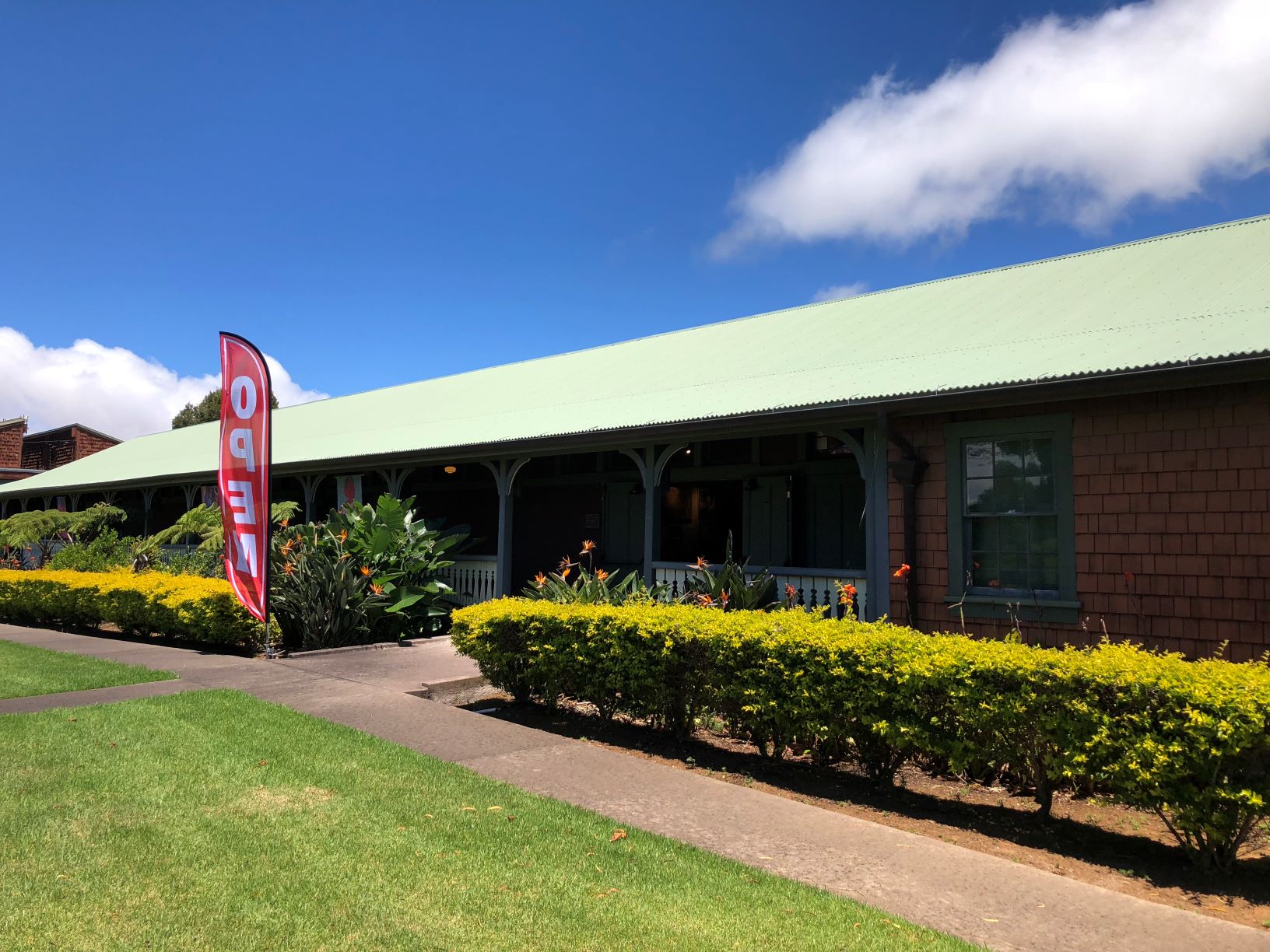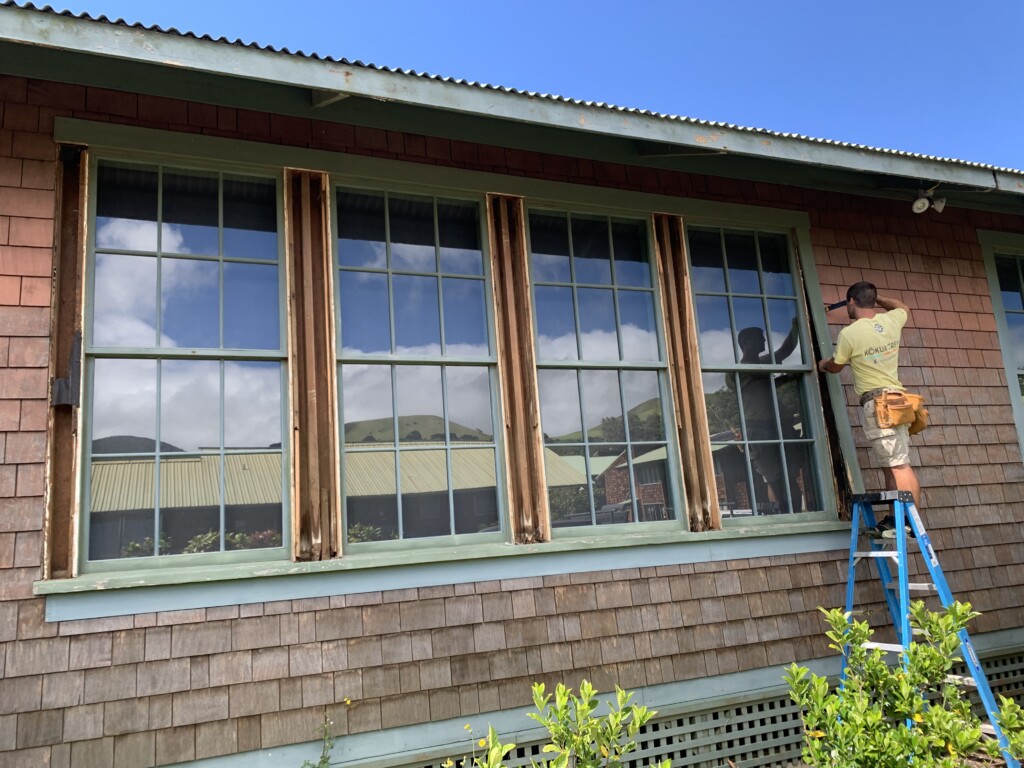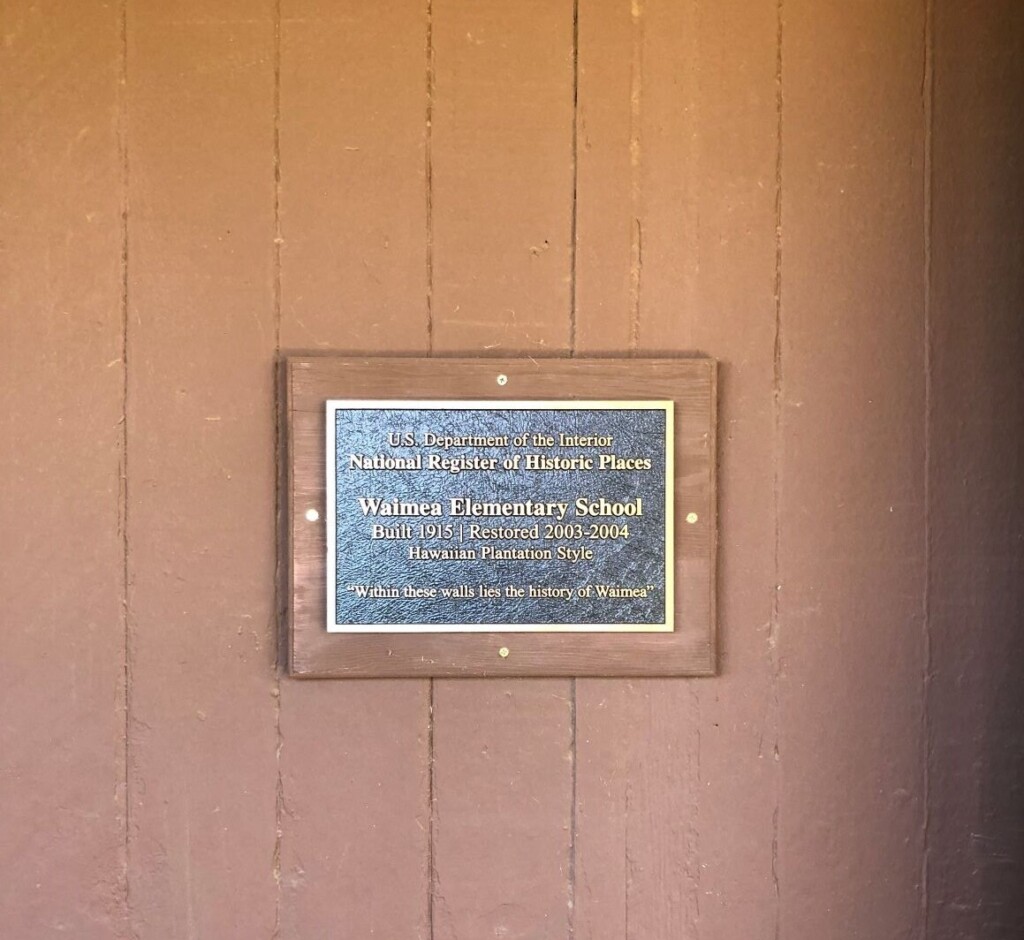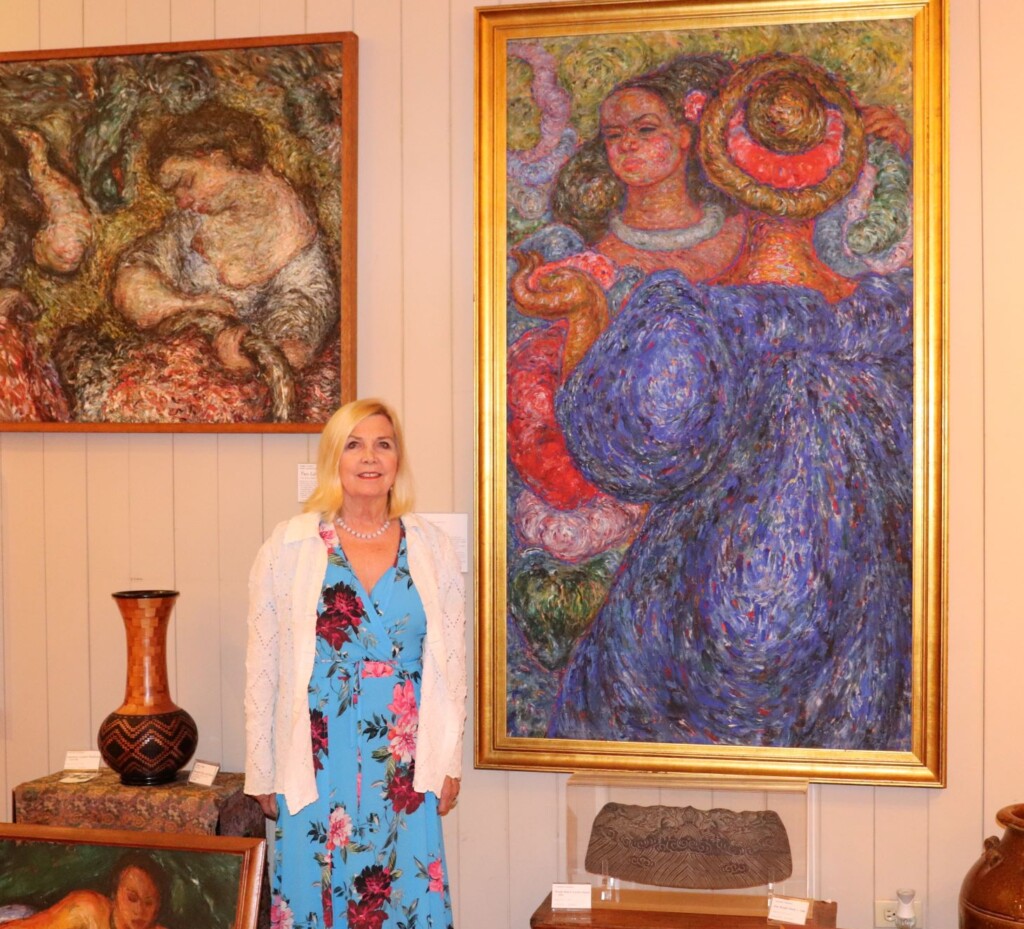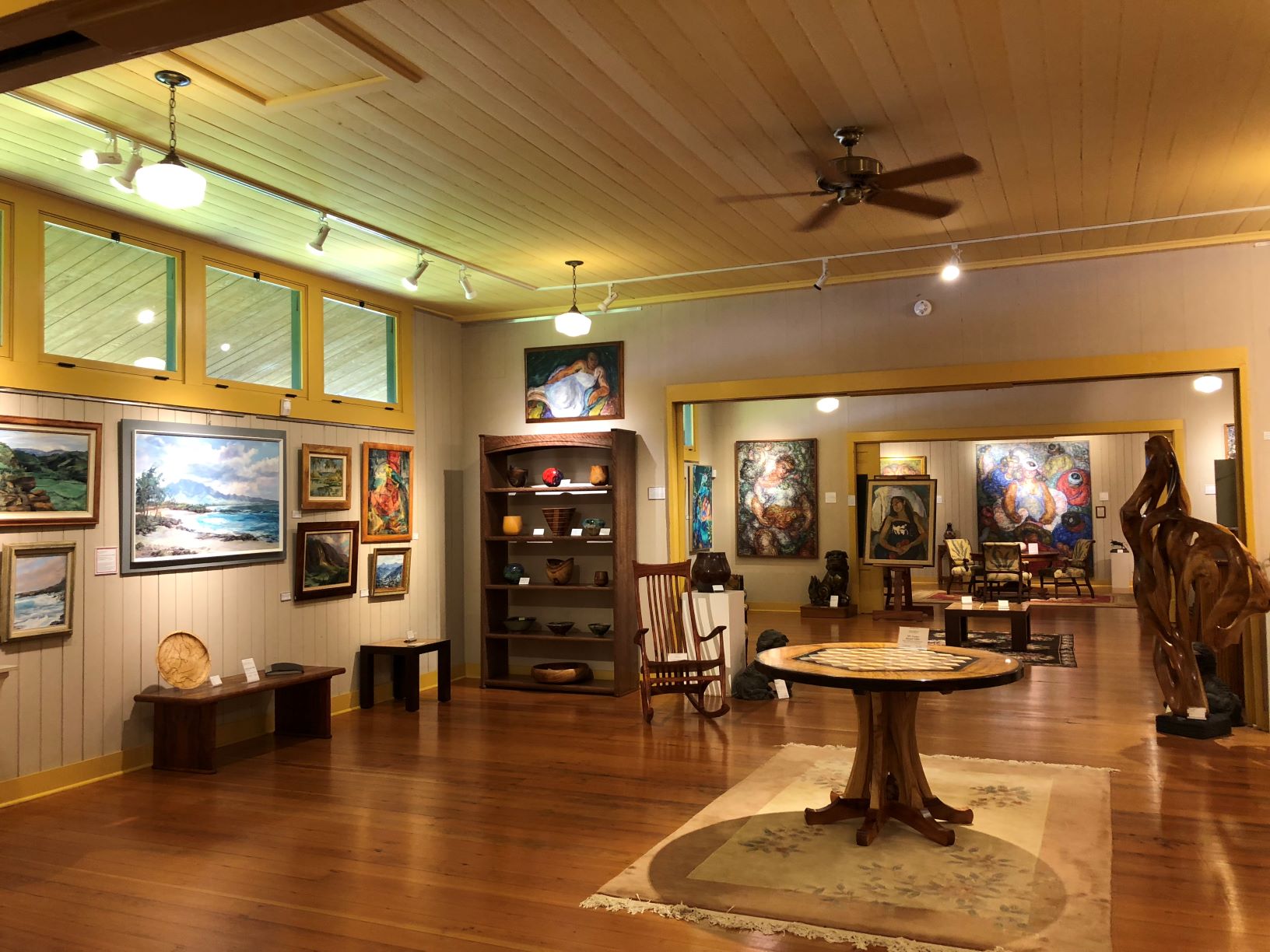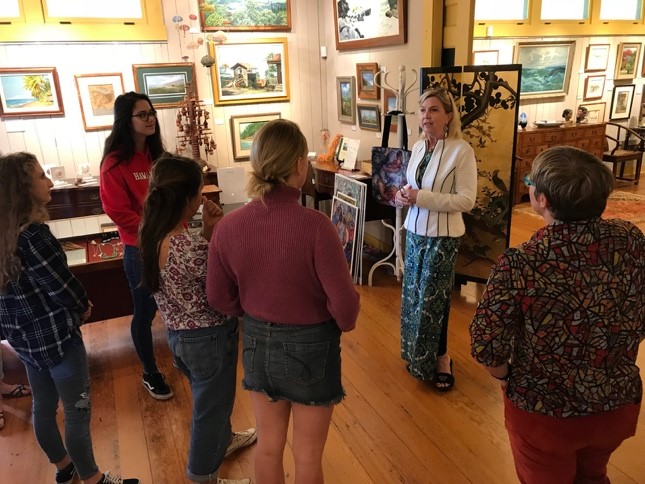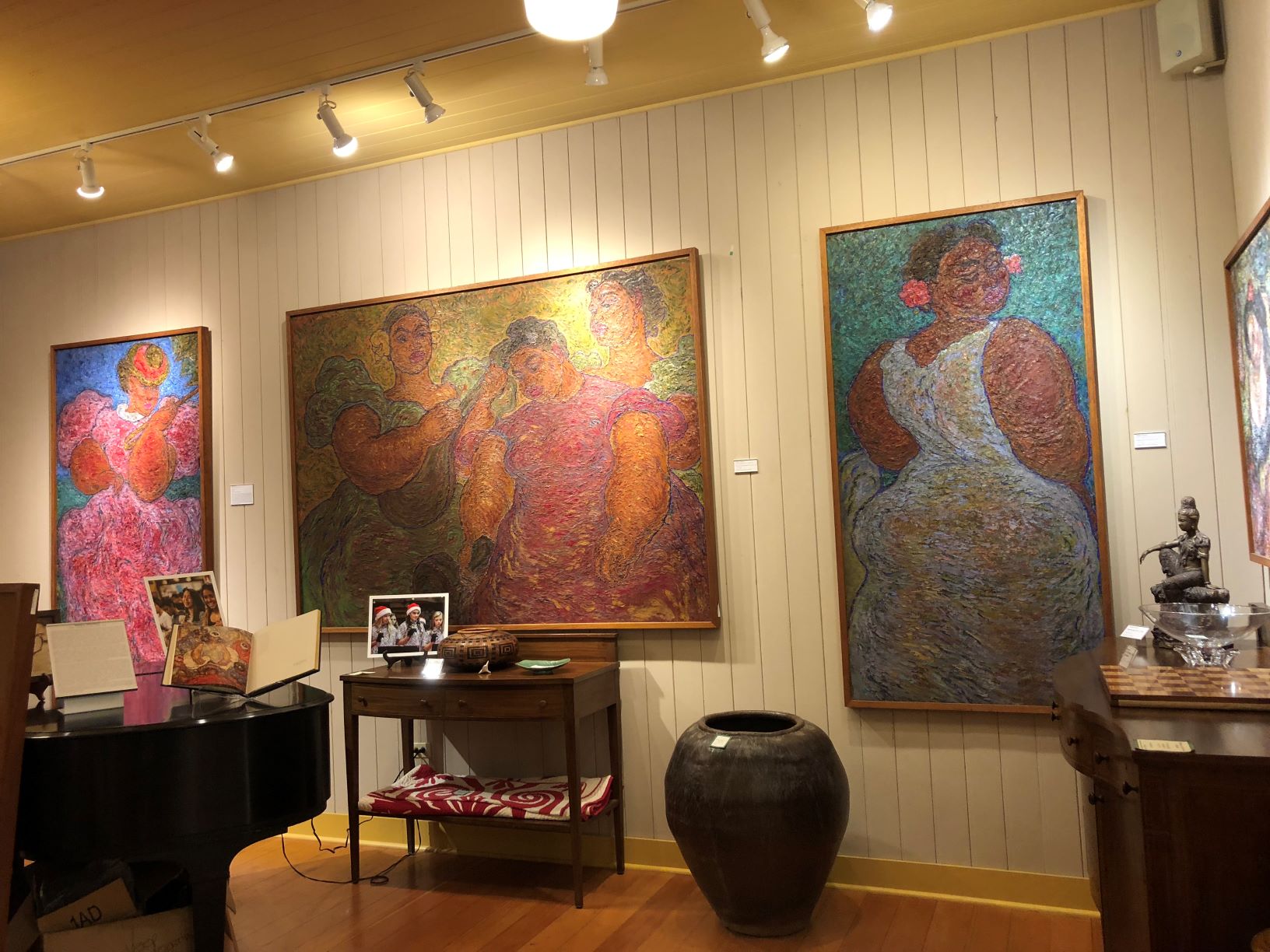When considering examples of adaptive reuse in the Islands, one worth noting is Isaacs Art Center at Hawai‘i Preparatory Academy (HPA) in Waimea on West Hawai‘i. The Center showcases a vibrant collection of some of Hawai‘i’s most celebrated artists housed in “Building N”, the original schoolhouse from Waimea School that was built in 1915.
The Center originated from an annual auction that was launched in 1974 to raise funds for HPA’s nascent scholarship program. Prominent families such as the Isaacs donated works of art to support the effort and the auction quickly became the go-to event to acquire important works by Hawai‘i artists.
Once HPA began to look for a brick-and-mortar gallery, Thomas Quinlan, president of the Waimea Preservation Society and board member of HHF, and members of the Waimea Community Association presented a unique proposal; finding a new home for the beloved Building N in order to preserve it. The conversation led to a community call to action to help relocate and restore the building for its new purpose.*
After an 18-month restoration, Isaacs Art Center opened in 2004, and received a Preservation Honor Award from Historic Hawai‘i Foundation for its rehabilitation the following year. The schoolhouse was named to the State Register of Historic Places in 2003 and to the National Register in 2005. Also in 2005, the Center was named custodian of the largest collection of works by internationally acclaimed artist Madge Tennent, giving it distinction as one of the finest public collections of Hawaiian art in the state. Today, the Center thrives as a place to share, educate and appreciate fine art by established and emerging Hawai‘i artists, while supporting HPA and its students.
Taking proactive steps to maintain the 105-year old building, the Center recently completed a series of preservation projects with funding from an HHF Historic Preservation Grant. Interior lighting and display fixtures were updated to enhance visitors’ experience; deteriorating window frames were replaced; exterior walls of the building were treated for mold removal and repainted; a comprehensive mold inspection and treatment plan were completed; and an Historic Register designation sign was secured at the building entrance, emphasizing the building’s historic significance.
- BEFORE: Water-damaged planks with original wood.
- AFTER: Windows repaired with new flashing.
- A plaque at the entrance underlines the building’s historic significance and repurposed use.
- IAC Director Mollie Hustace
Upon completion of the grant project, we asked Mollie Hustace, Isaacs Art Center Director, to respond to a brief Q&A.
HHF: Please describe some of the positive outcomes of completing the project.
MH: The project provided the funds for an art suspension system that displays multiple artworks and avoids damage to the walls from constant nailing. The visibility of both permanent collections and art for purchase affords more educational opportunities and increases the proceeds needed for school financial aid.
We also stabilized several foundation piers and contracted a mold evaluation professional. The mold removal report is central to our preservation plans for the interior and exterior of Building N. We now have completed repairs to the exterior building and sealed areas of water intrusion in preparation for power washing and repainting.
- Isaacs Art Center restored its interior gallery.
- English students attending a class in the gallery.
- Part of the Madge Tennent collection.
HHF: How did you become aware of the HHF Preservation Grant?
MH: My brother-in-law, Charlie Pietsch III, was a former Chair of Historic Hawai‘i Foundation. Our friend, Phyllis Fox, was also very active with preservation projects; they both inspired and informed me about the essential work of this organization. As Director of Isaacs Art Center of Hawai‘i Preparatory Academy, originally Waimea School Building N, I planned to apply for an HHF preservation grant as our rural museum is on the Hawai‘i and National Registers of Historic Places and deserves restoration.
HHF: Do you have any words of advice for someone planning a preservation project?
MH: It is essential to plan sufficient lead time for project completion in order to meet report deadlines. The contractor’s schedules may change and flexibility is necessary. Fortunately, HHF provides crucial guidance to make preservation of our historic Waimea School building possible and rewarding.
HHF: How has the Center adapted to social distancing and stay at home orders? (Please include how long you had to close, when you reopened, etc.)
MH: Aligned with HPA’s procedures, Isaacs Art Center was closed to the community from March 24 to July 22. During that time, we continued to share our collections and the current exhibit (Ho‘omau – Perpetuating Hawaiian Culture in Art: Ed Kayton and Kathy Long) on our website, in our e-newsletters, and through social media.
With our July reopening, we require a mask, thermal scan, hand sanitizing, distancing, and completion of a contact tracing form that remains confidential with our July reopening. We have increased our presence on social media and are initiating a video series about the building history and artworks.
HHF: Have you experienced any silver linings as a result of the pandemic? For example, do you notice any change in public/student attitudes towards art?
MH: The pandemic has encouraged us to focus our effort on client and friend outreach through targeted emails. It has allowed us to boost our social media presence with regular, even daily, posts and outreach. We will be expanding upon our Community Arts Program to incorporate a remote learning experience. It is our goal to share art lessons in a digital format with accompanying lesson videos.
We are grateful for our historic building, now a notable art gallery and museum, and we appreciate the enrichment that the art provides to our community and school. During the pandemic, our island visitors have remarked how much it means to them to explore the Center when many places are closed.
HHF: Do you have a favorite historic place in the Islands? Please tell us about it and what makes it special to you.
MH: The heiau of Pu‘ukohola in Kawaihae is compelling for its robust lava architecture built by Kamehameha I. It is the largest extant temple site of worship and sacrifice in Kamehameha’s unification of the Hawaiian Islands. The historical complex in Kailua-Kona with Kamehameha’s and Liholiho’s residence, the heiau ʻAhuʻena, and the Hulihe‘e Palace is an essential and memorable place.
Having lived in Nu‘uanu Valley, I cherish the entire area, from Iolani Palace to Queen Emma Summer Palace to the Ko‘olau peaks, where Kamehameha won the final battle for unification of the islands and creation of the Hawaiian Kingdom.
*For more information about the founding of Isaacs Arts Center, read this Ke Ola article written by writer Catherine Tarleton.
By Beth Iwata, Director of Development October 1, 2020


